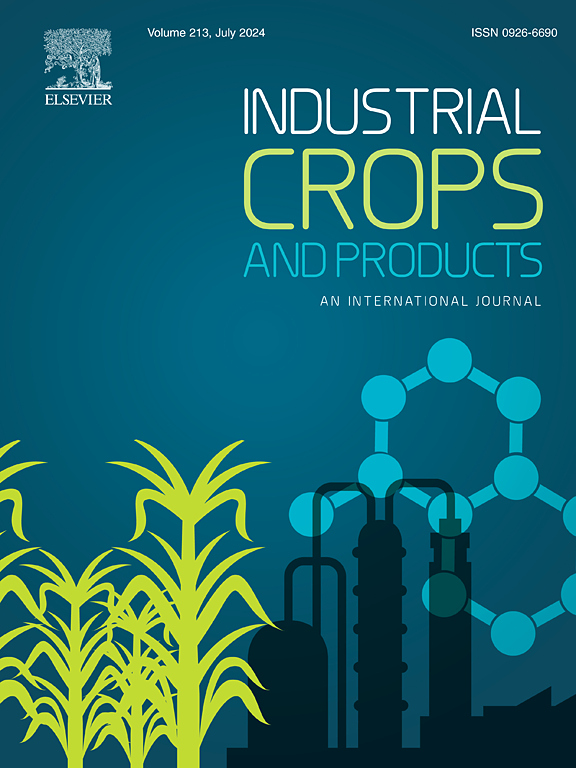Endophytes drive the biosynthesis and accumulation of sesquiterpenoids in Atractylodes lancea (Thunb.) DC.
IF 5.6
1区 农林科学
Q1 AGRICULTURAL ENGINEERING
引用次数: 0
Abstract
As a traditional medicinal plant, Atractylodes lancea (Thunb.) DC. has a wide range of therapeutic effects, and the sesquiterpenoids in rhizomes are the key medicinal basis. Endophytes influence the formation of plant metabolites. However, the intrinsic mechanism by which aboveground endophytes and belowground endophytes methodically influence the sesquiterpenoid biosynthesis in medicinal plants remains unknown. The two typical chemotypes of A. lancea, which differ in volatile oil, were selected to explore the role of endophytes on sesquiterpenoid biosynthesis using metabolomics and microbiome analyses. The results showed that differential crucial metabolites closely related to sesquiterpenoid synthesis were screened to be 40 in the rhizomes and 5 in the leaves. The diversity of endophytes had significant differences between different origins and tissues of A. lancea. Nocardiaceae and other endophytes in leaves of both A. lancea chemotypes activated primary metabolic and signaling pathways. The diversified sesquiterpenoids and precursors produced by both A. lancea chemotypes selected the specific endophytes in rhizomes. The specific endophytes such as Sphingomonadaceae and Bacillaceae in turn resulted in the different levels of the key components in the two A. lancea chemotypes, which were also confirmed in pot experiments. Overall, this research provides novel viewpoint into how microbes regulate the geoherbalism of A. lancea and offers a theoretical foundation for more efficient and rational utilization of endophytic microbial resources to regulate the constitution of active ingredients in cultivated medicinal plants in the future.

内生菌驱动苍术倍半萜的生物合成和积累直流。
苍术是一种传统的药用植物。直流。具有广泛的治疗作用,根茎中的倍半萜类化合物是重要的药用基础。内生菌影响植物代谢产物的形成。然而,地上内生菌和地下内生菌系统地影响药用植物倍半萜类生物合成的内在机制尚不清楚。采用代谢组学和微生物组学分析方法,对不同挥发油含量的两种典型化学型刺花蒿进行研究,探讨内生菌对倍半萜类生物合成的作用。结果表明,与倍半萜类化合物合成密切相关的关键代谢物在根茎中有40种,在叶片中有5种。不同产地、不同组织间内生菌多样性存在显著差异。两种化学型杉树叶片中的诺卡菌科和其他内生菌激活了初级代谢和信号通路。两种化学型所产生的倍半萜和前体的多样性选择了根状茎中特定的内生菌。不同内生菌(Sphingomonadaceae)和芽孢杆菌科(Bacillaceae)的差异导致了两种梭子楠化学型中关键成分含量的差异,盆栽实验也证实了这一点。综上所述,本研究为了解微生物如何调控龙葵地草本提供了新的视角,为今后更有效、合理地利用内生微生物资源调控栽培药用植物有效成分构成提供了理论基础。
本文章由计算机程序翻译,如有差异,请以英文原文为准。
求助全文
约1分钟内获得全文
求助全文
来源期刊

Industrial Crops and Products
农林科学-农业工程
CiteScore
9.50
自引率
8.50%
发文量
1518
审稿时长
43 days
期刊介绍:
Industrial Crops and Products is an International Journal publishing academic and industrial research on industrial (defined as non-food/non-feed) crops and products. Papers concern both crop-oriented and bio-based materials from crops-oriented research, and should be of interest to an international audience, hypothesis driven, and where comparisons are made statistics performed.
 求助内容:
求助内容: 应助结果提醒方式:
应助结果提醒方式:


